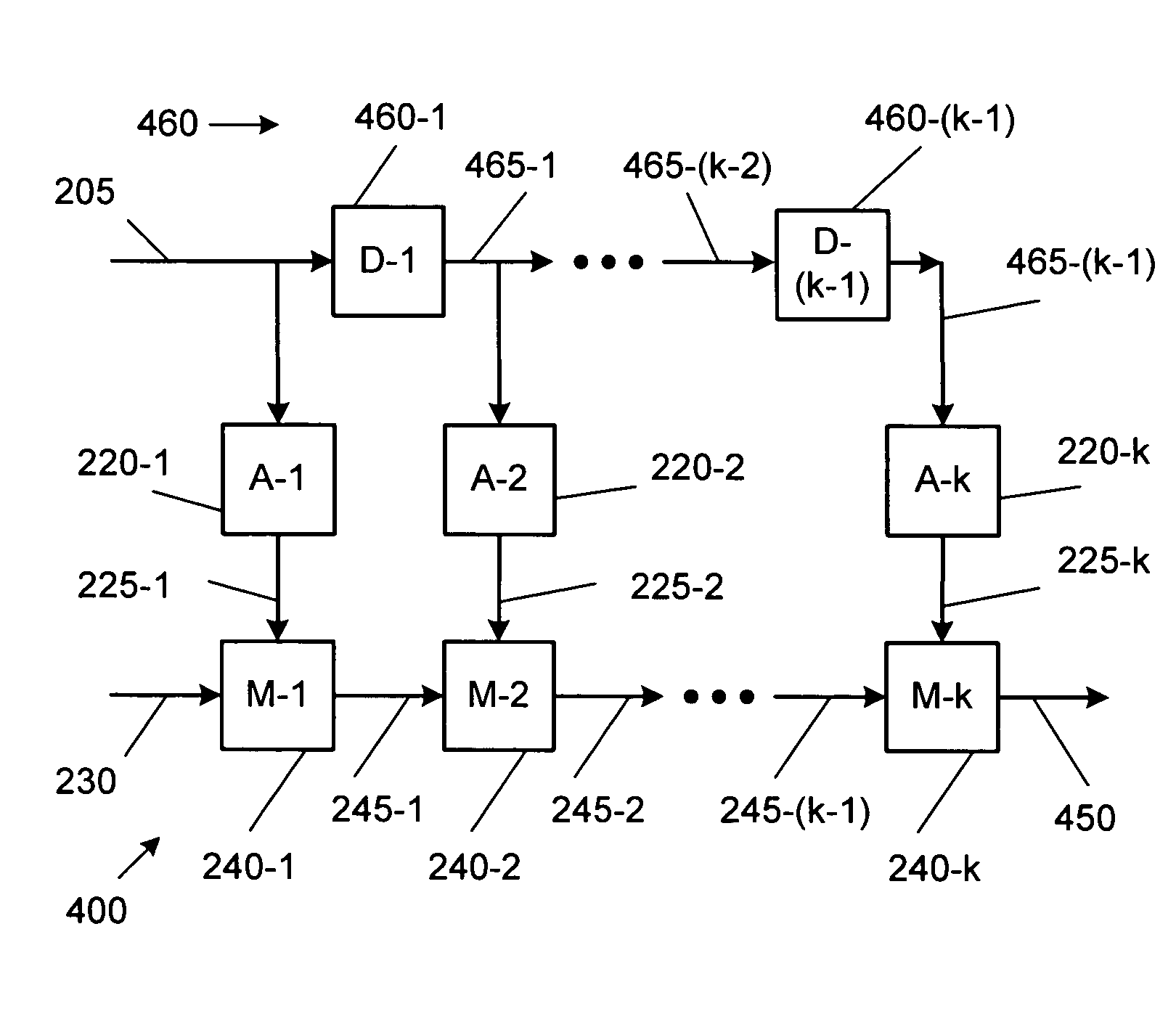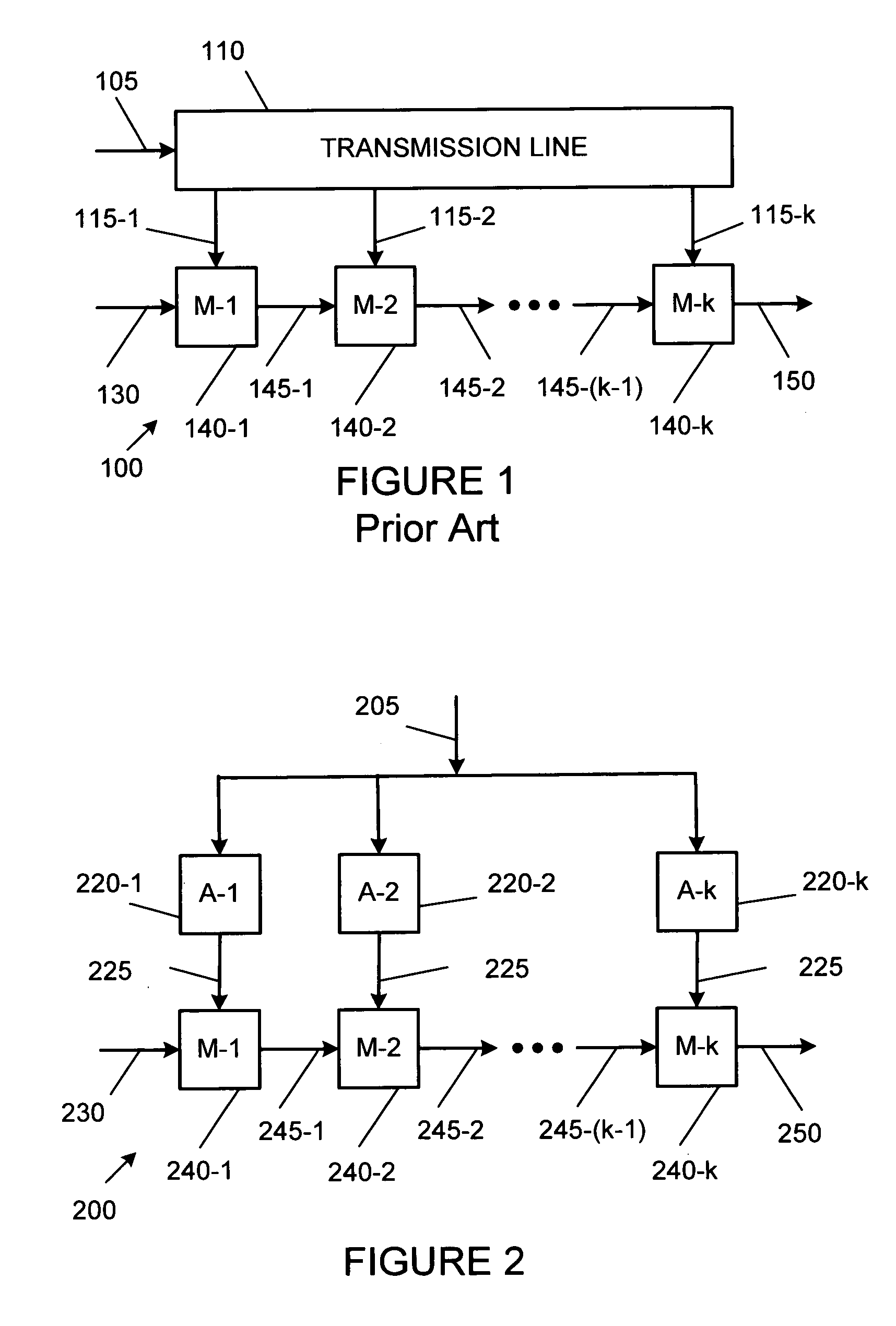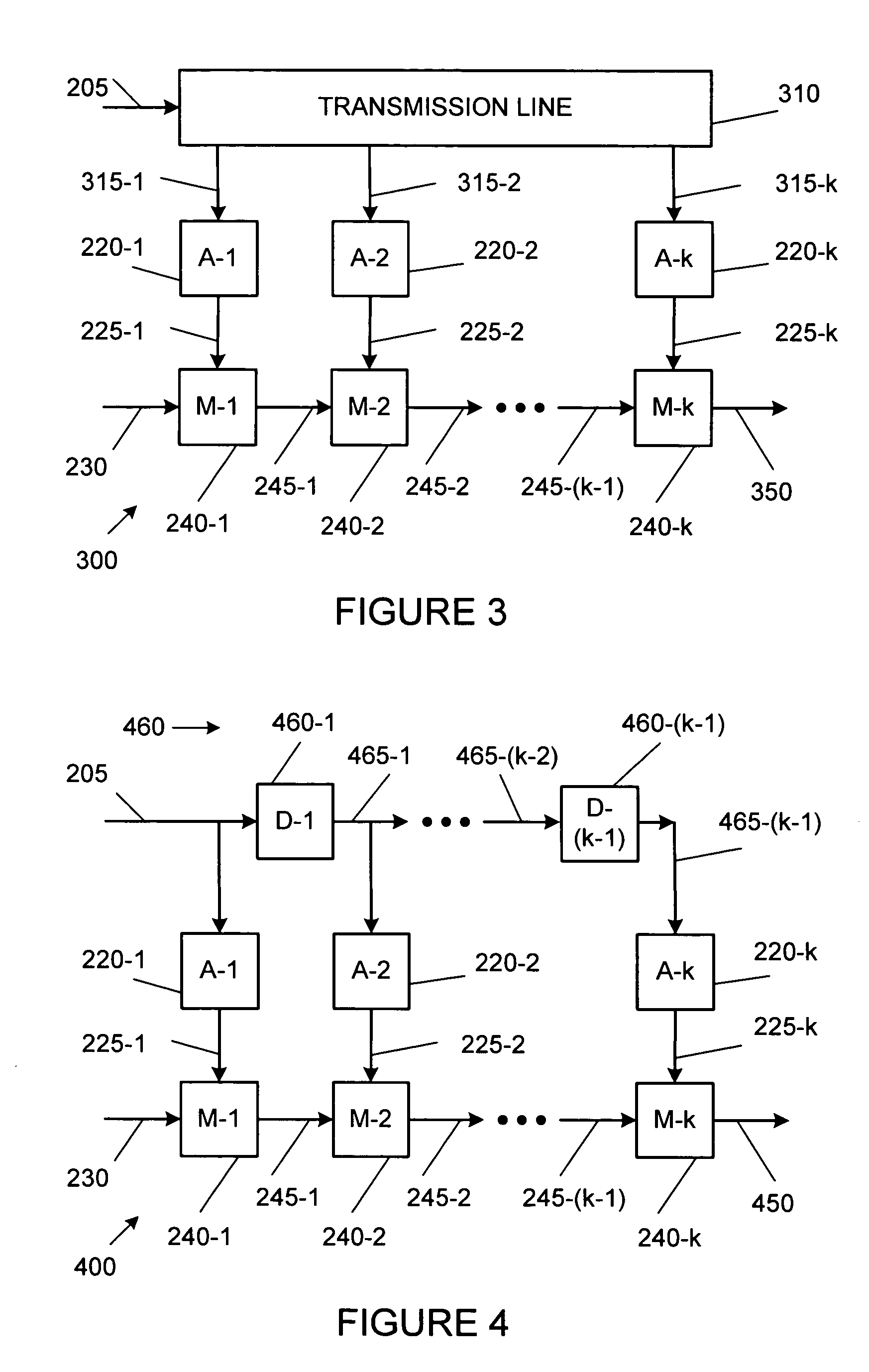Distributed amplifier optical modulators
a technology of optical modulators and amplifiers, applied in the field of optical modulators, can solve the problems that low-speed devices are not suitable for high-speed ghz rate systems, and achieve the effects of reducing capacitance, improving modulating speed, and improving modulating speed
- Summary
- Abstract
- Description
- Claims
- Application Information
AI Technical Summary
Benefits of technology
Problems solved by technology
Method used
Image
Examples
Embodiment Construction
[0015]FIG. 1 is a block diagram of a prior art traveling wave (TW) integrated optical modulator. Traveling wave modulator 100 is made of transmission line (TL) 110 and series connected k modulating elements 140-1 to 140-k (M-1 to M-k). TL 110 receives modulating signal 105 at its input port and has k output ports 115-1 to 115-k. The output ports 115-1 to 115-k can be equally spaced apart along the length of TL 110, which would correspond to equal amounts of delay between the output ports. The distribution of ports along the length of TL 110 can follow some other distribution. Each of the outputs 115-j is delayed relative to the previous output 115-(j−1), depending on the length of the transmission line between any two adjacent output ports. Each of the k outputs is connected to the modulating input terminals of the respective k optical modulating elements 140-1 to 140-k connected in series.
[0016]Optical carrier 130 is connected to the carrier input of the first modulator 140-1. The ...
PUM
| Property | Measurement | Unit |
|---|---|---|
| refractive index | aaaaa | aaaaa |
| output impedance | aaaaa | aaaaa |
| input impedance | aaaaa | aaaaa |
Abstract
Description
Claims
Application Information
 Login to View More
Login to View More - R&D
- Intellectual Property
- Life Sciences
- Materials
- Tech Scout
- Unparalleled Data Quality
- Higher Quality Content
- 60% Fewer Hallucinations
Browse by: Latest US Patents, China's latest patents, Technical Efficacy Thesaurus, Application Domain, Technology Topic, Popular Technical Reports.
© 2025 PatSnap. All rights reserved.Legal|Privacy policy|Modern Slavery Act Transparency Statement|Sitemap|About US| Contact US: help@patsnap.com



